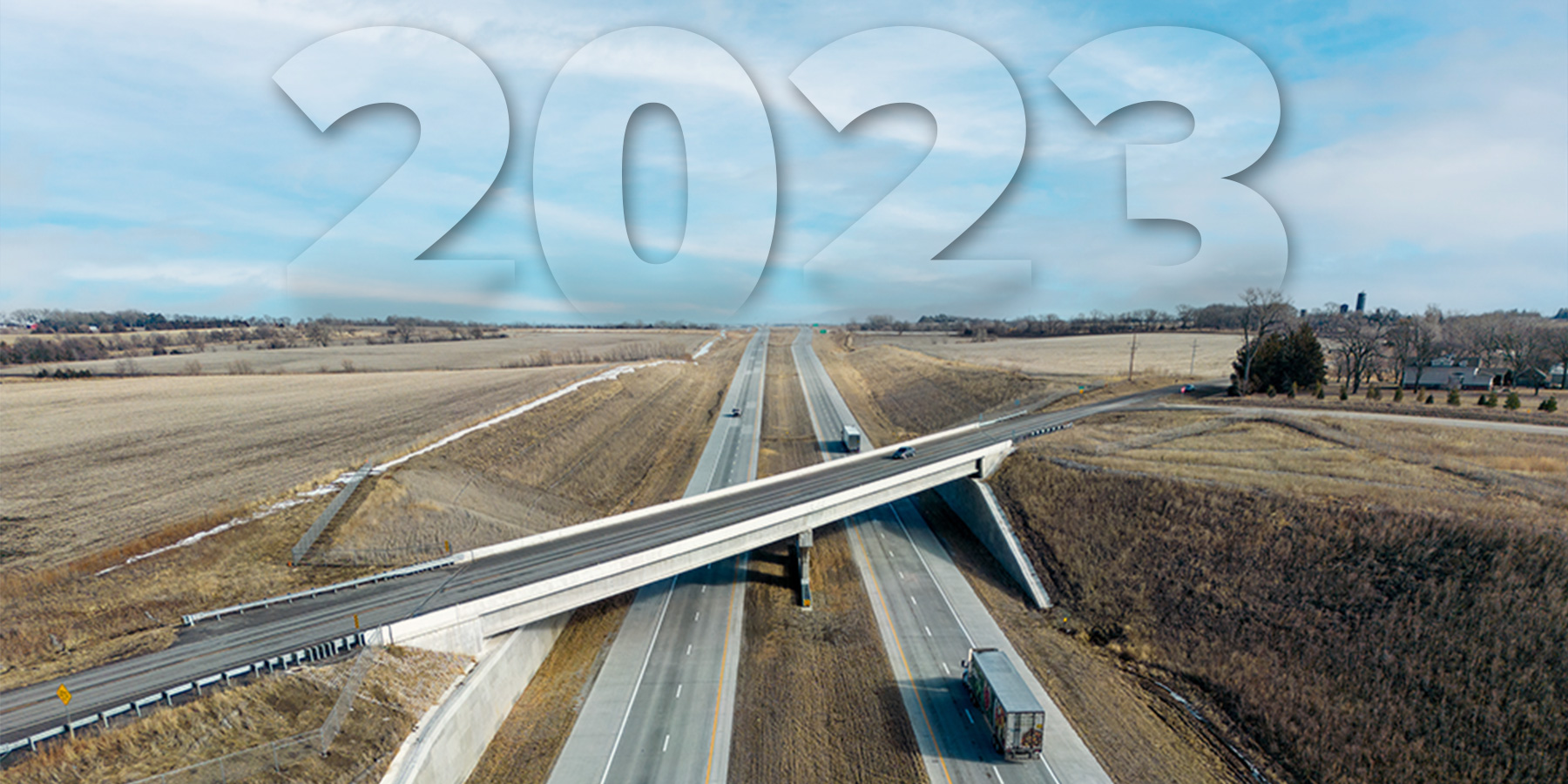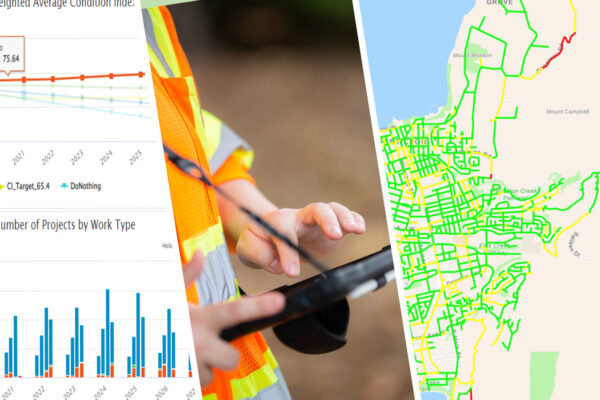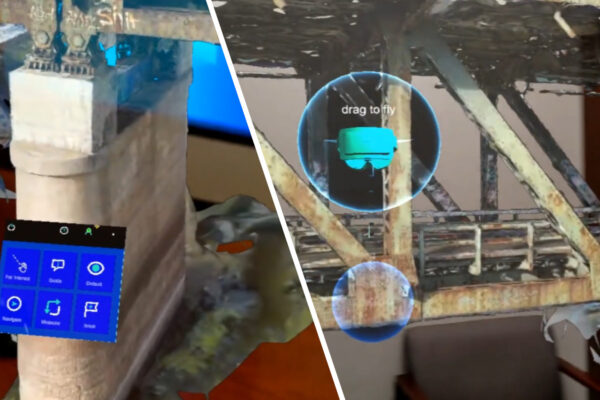Looking Ahead: Challenges and Opportunities in 2023

In the first weeks of 2023, Benesch subject matter experts offered insight into the top challenges and opportunities they see coming in the new year.
Here’s what they had to say:
Increased Focus on 3D
While 3D design was a hot topic in 2022, its prevalence in the industry is only expected to increase in 2023. According to Amelia Harris, Technical Manager, this has a lot to do with how different states are adjusting to the changing technology.
“It probably feels like we keep talking about 3D modeling, but that’s because it’s such a big change for the industry. It’s coming to different states at different times and to different project components at different times. For example, PennDOT projects now require OpenRoads (3D modeling) for the roadway components while the bridge components are still in 2D. So, for Pennsylvania, the first few bridge projects in 3D will be a big transition.”
Benesch Civil Group Manager Travis Kluegel expects continued development of 3D design deliverables for both construction documents and visualization to aid in public involvement.
“As this becomes more and more common on projects, it’s going to take effort on all sides. Clients will need to create and maintain software workspaces, while contractors and consultants need to work together to determine what level of detail is required in this new set of deliverables.”
For more information on 3D modeling, read this article by Ryan Thady or watch this recent Roads & Bridges webinar with Bret Tremblay.
Managing Inflation
With the passing of the Bipartisan Infrastructure Law (BIL) in 2021, agencies across the nation anticipated a substantial influx in funding. While the funding is coming through, the money isn’t going as far as expected when applied to the planned projects.
“Whether not as much funding is coming as expected or inflation is increasing the cost of projects, clients are going to need us to be flexible. I’ve already seen changing PS&E and let dates as clients reassess budgets,” shared Design Group Manager Amanda Zacharias. “I also expect the demand for practical, low-cost designs to increase as we work to manage inflation.”
Inflation has also caused construction cost to climb, something Structural Group Manager Scott Wojteczko tries to consider during design.
“Project costs have skyrocketed between planning and construction these past 2 years, stressing client programs. As consultants, we are responsible for the cost estimating side of things and need to stay at the forefront of using the tools available to us – and market predictions – to best estimate current and future pricing for our projects.”
On the planning side, a provision in the BIL allows for Metropolitan Planning Organizations (MPO) to develop a housing coordination plan as part of their Long-Range Transportation Plans. Once again, this presents both challenges and opportunities in 2023.
“The affordable housing provision empowers MPOs to focus on regional goals for the integration of housing, transportation and economic development strategies,” said Community Planning Team Leader Catherine Hartley. “This brings with it some challenges. The bill provides little guidance on how MPOs should implement this language into their plans. My team is currently working with Florida clients on developing the appropriate approach. The work we are doing now should create a blueprint of sorts for future plans.”
Electrification of Transportation
As a part of the BIL, $7.5 billion has been designated for building out a national network of electric vehicle (EV) charging stations. To qualify for funding, Wisconsin submitted their EV Infrastructure Deployment Plan in the summer of 2022. Funds are expected to be available in 2023 after plan approval. Zacharias sees this push for EV charging stations creating both opportunities and challenges for the state.
“This Wisconsin Electrification Initiative is poised to have significant impacts both environmentally and economically, especially for community members driving or looking to drive electric vehicles. However, with this being a new initiative it brings some challenges to communities unsure of how to implement charging stations into their community plan. Time will tell how this push will impact infrastructure design throughout Wisconsin and other states looking to take advantage of this funding.”
Looking even further head, cars won’t be the only form of transportation needing charging stations. Sonya Ceballos, Project Manager on Benesch’s aviation team, provided insight into future needs.
“Electric aircraft manufacturing and electrical aircraft charging are coming on-line. With the first Electric Vertical Take-Off and Landing (eVTOL) aircraft slated for certification in 2024, we’ll need to start incorporating electrical aircraft charging stations into designs.”
Staffing
Though the “Great Resignation” is no longer a top headline, staffing continues to be an area of concern in the industry.
“One thing we are seeing is that DOTs and other agencies are facing challenges in terms of staff retention, which means they will be relying on consultants to keep projects moving,” explained Aaron Buettner, Structural Group Manager. “Now, more than ever, we need to understand our clients’ needs so well that we are seen as an extension of their staff.”
A focus on relationship building with clients creates a reliable partnership that can be leaned on during times of turnover. In addition to project work, Benesch staff are often able to provide technical assistance and training, essentially becoming an extension of a client’s team.
Like every year before it, 2023 brings both opportunity and challenge. At Benesch, our goal will always be to help our clients make the most of every opportunity and support them through any challenges. To stay up to date on Benesch news and insights throughout the year, follow us on LinkedIn.
Meet Our Experts

Amelia Harris, PhD, PE

Travis Kluegel, PE

Amanda Zacharias, PE, VMA

Scott Wojteczko, PE, SE

Catherine Hartley, AICP, CNU-A





